It’s a big day in the neighbourhood: the 18 bells of St. Dunstan’s Basilica, silent and grounded for many years, are being remounted inside the eastern spire.
This wouldn’t have happened without the tenacious work of our friend Catherine Hennessey and the generosity of those that donated to the cause.
If you’re downtown today, come watch the spectacle.
 ,
, 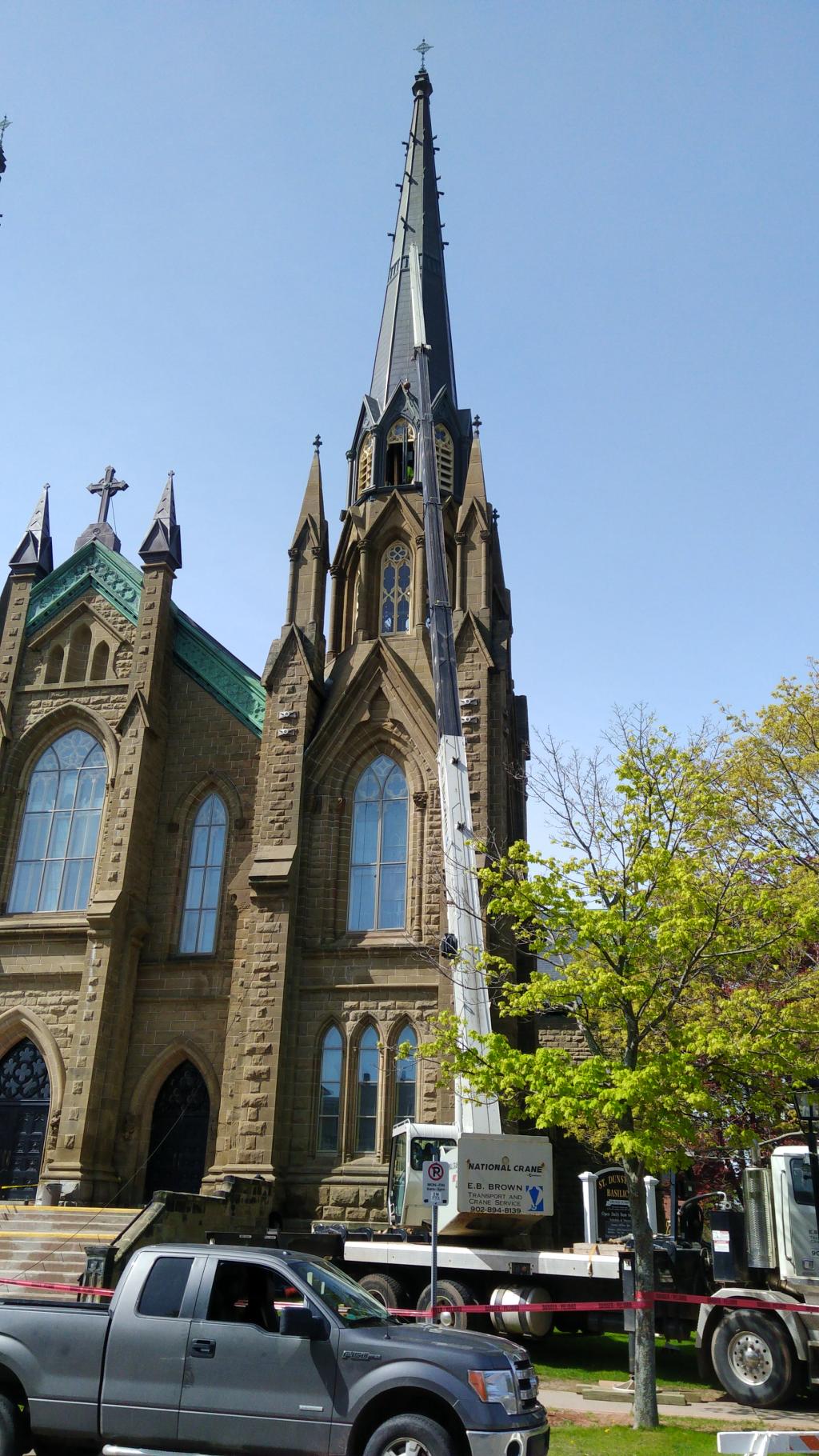 ,
, 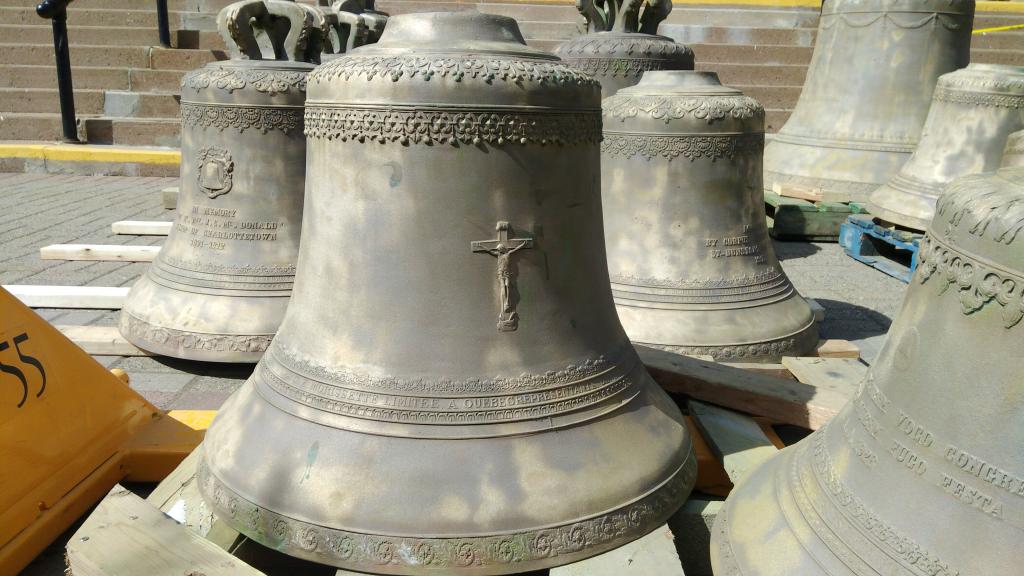
I was at Colonel Gray Senior High School tonight for the last home & school meeting of the year.
I arrived early so I had some time to ramble around the school’s library before everyone else arrived. The last student of the day to use the computer on the checkout counter had forgotten to logout, so I was able to use the machine to browse the Internet for a bit; when I tried to visit my own site, ruk.ca, a strange warning popped up on the screen:
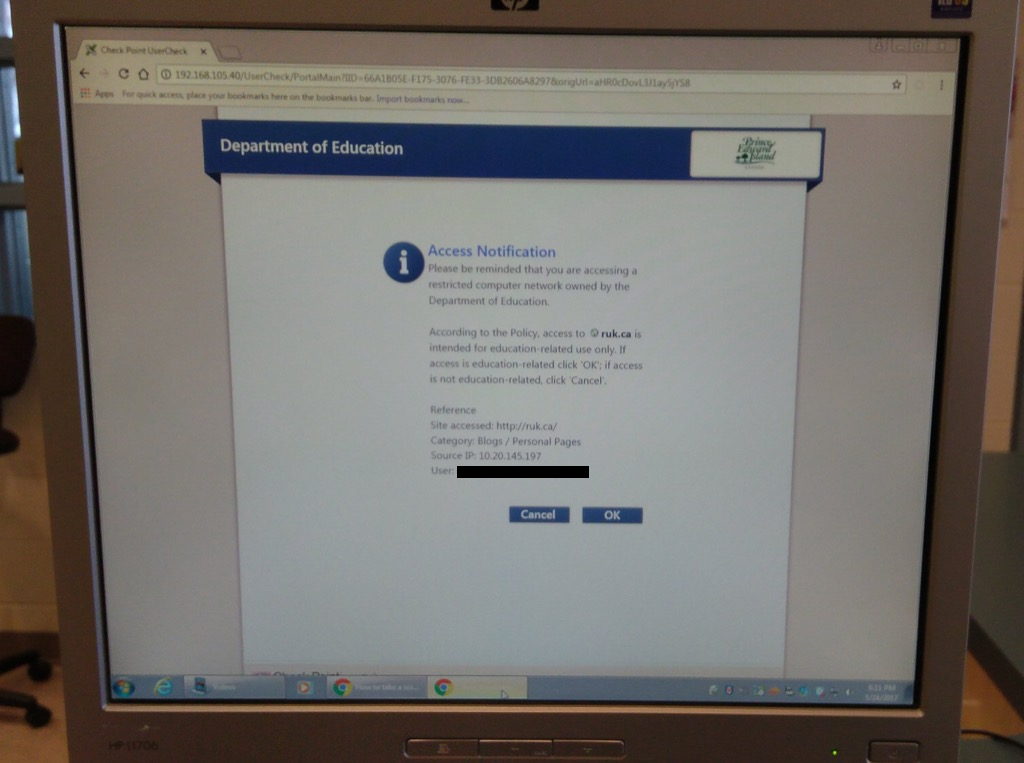
The warning, for those of you with tiny screens, reads:
Access Notification
Please be reminded that you are accessing a restricted computer network owned by the Department of Education.
According to the Policy, access to ruk.ca is intended for education-related use only. If access is education-related click “OK”; if access is not education-related, click “Cancel”.
Reference
Site accessed: http://ruk.ca/
Category: Blogs/Personal Pages
What a curious and annoying system to have to navigate: has any student, ever, reconsidered their decision to visit a website based on this “reminder.”
How can I get this restriction removed from my website?
Better yet, how can we relieve our students from the burden of having to surf the Internet censored by force of totalitarian annoyance?
Thanks to the generosity of Richard Homburg1, Stars for Life Foundation has an activity and office space in the old Dave’s Cave space in the Confederation Court Mall (Dave’s Cave was the hip jeans-selling counterculture-cousin to the more traditional Henderson & Cudmore clothing store upstairs).
I’ve been a board member at Stars for Life for the past year, and we had a chance to hold our first board meeting in the new space yesterday; many present mentioned that the last time they’d been in the space was to buy Lees or GWGs.
On my way out I spotted, in an anteroom, a hulking silver safe. As I’m something of a student of the basement safes of Charlottetown, I snapped a photograph:
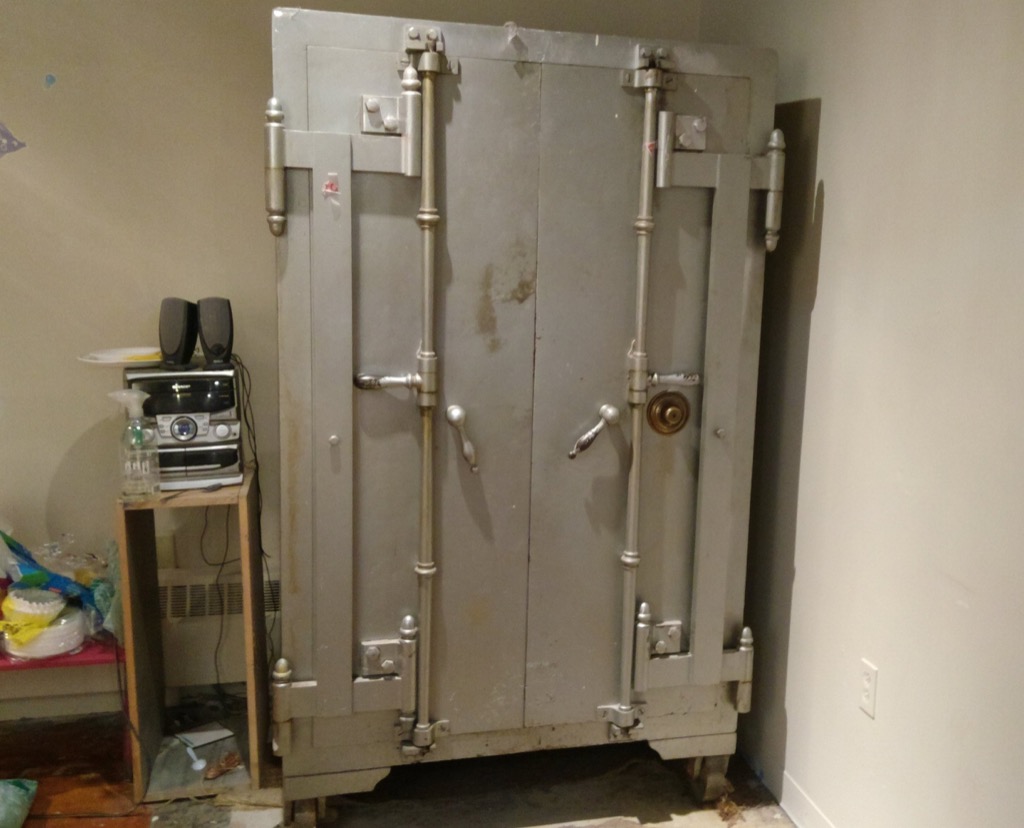
When I got back to my office, I emailed the photo to my friend Chris Cudmore, of the H&C Cudmores, and Chris confirmed it was their safe and, what’s more, gave me the combination to it:
Yes that is the old H&C safe. I still remember the combination. TROY……the name of my grandfather Thomas Roy.
(Imagine the heist I could have pulled off if I’d put two and two together and figured this out on my own in the early 1990!)
Of course the first thing I did upon receiving this email was to go back to Dave’s Cave to try this out.
Sure enough, the dial on the safe was alphabetical rather than numeric:
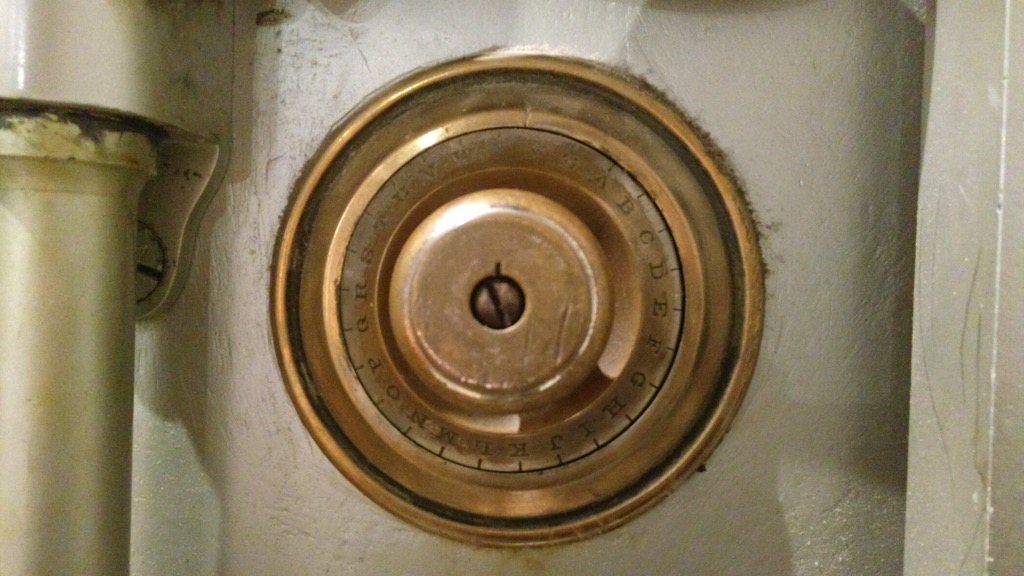
Unfortunately, upon opening the safe I found that the business end of it had been removed, no doubt as a safety measure to avoid people without the TROY getting themselves locked inside it:

It remains, however, a hulking thing of beauty.
Perhaps you’d like to see it for yourself? Why not take the opportunity to make a generous donation to Stars for Life! Just drop off your cheque next time you see the Dave’s Cave door open. I’m sure whoever helps you would be happy to let you give the door a heave.
1. I never expected to be typing this sentence in this space.
It was warm until late in the evening on Monday, so I sat out on the back porch and sketched the back of our neighbour’s house.
The spiral fire escape staircase was a challenge that I solved mostly through smudgy abstraction; I’m proud of the trees though, and of the darkened-windows.
It’s a fascinating house, filled with hithers and yons; since they purchased it some years ago, Angus and Karen have, bit by bit, been coaxing out its details and returning it to form.
So, a good house to be neighbours with on many fronts.
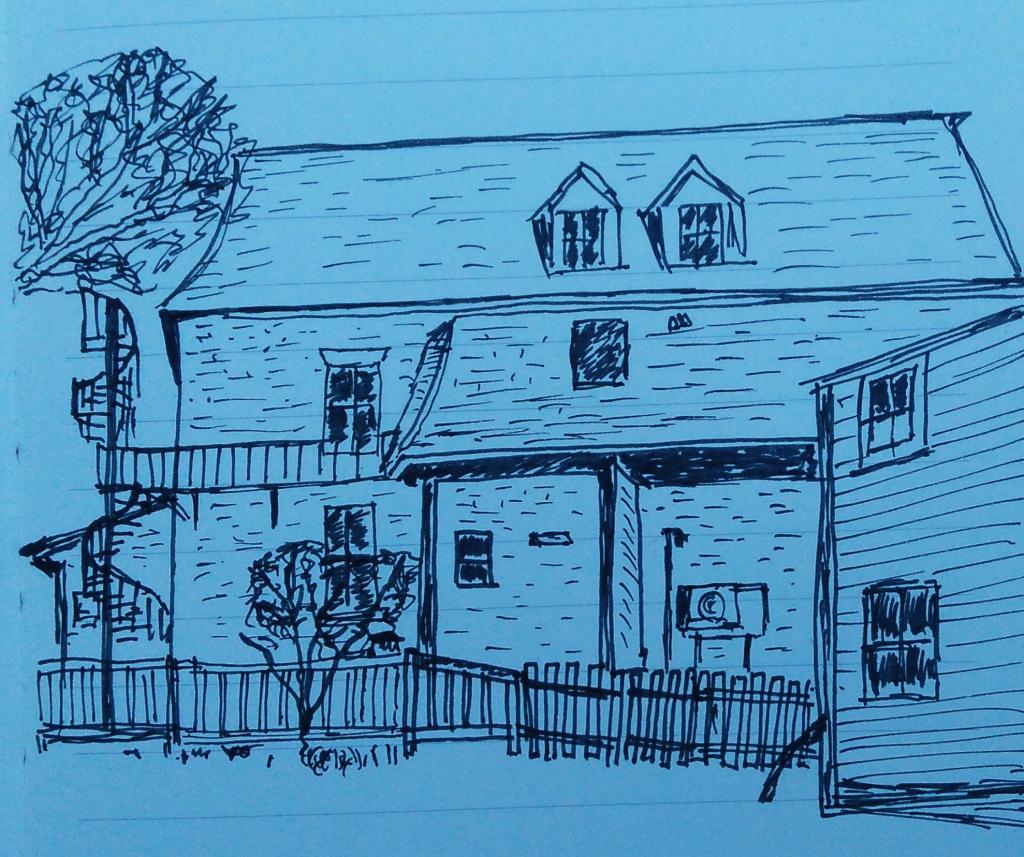
Four years ago last January I had the pleasure of spending a morning in the Bonshaw Hills taking a class in Japanese bookbinding from Jennifer Brown. It was great fun, and it gave me the skills and the inspiration to undertake many of the paper-related projects I’ve taken on in the years since.
This week, librarians from across Atlantic Canada are gathering here in Charlottetown for the annual conference of the Atlantic Provinces Library Association, and today, thanks to the efforts of Trina O’Brien Leggott, Jennifer gave an extended play version of the same class as a pre-conference workshop. I signed up as soon as it was announced, as I was eager to spend more time with Jennifer: she has an infectious creativity, and a patient way of explaining complicated things.
We started the day by making an accordion-fold book: we took two pieces of equal-sized stiff cardboard, covered them with paper, and then glued folded rice paper between them. Closed, mine looked like this:
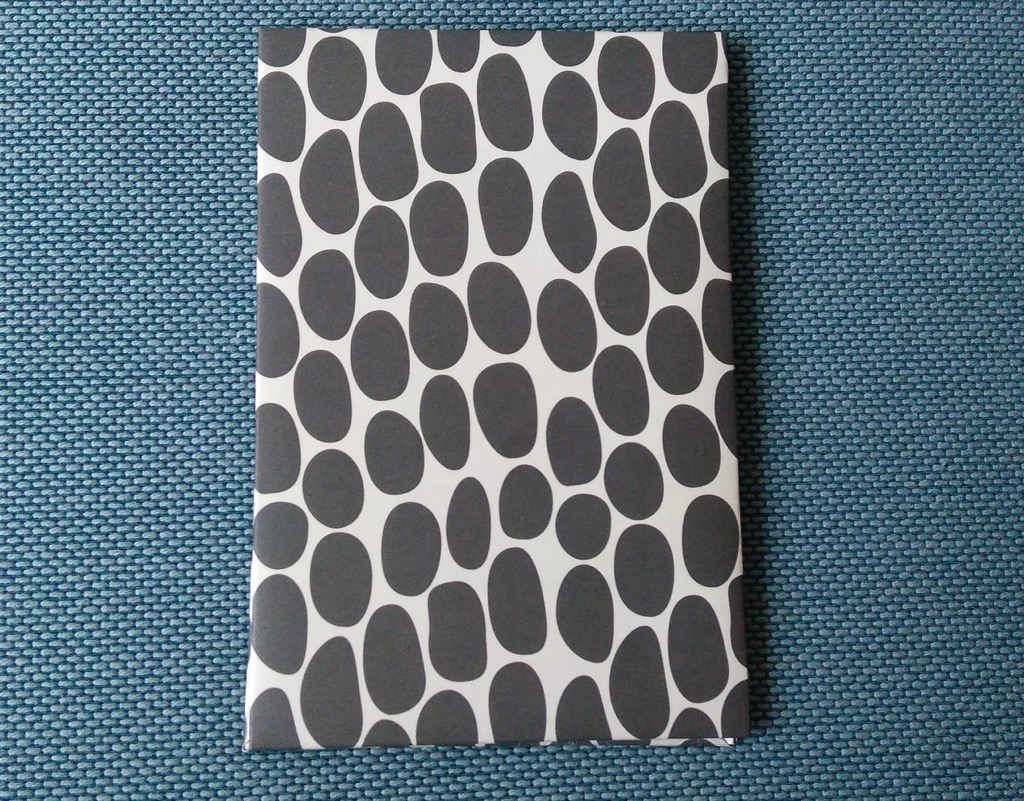
Open, it looked like this:
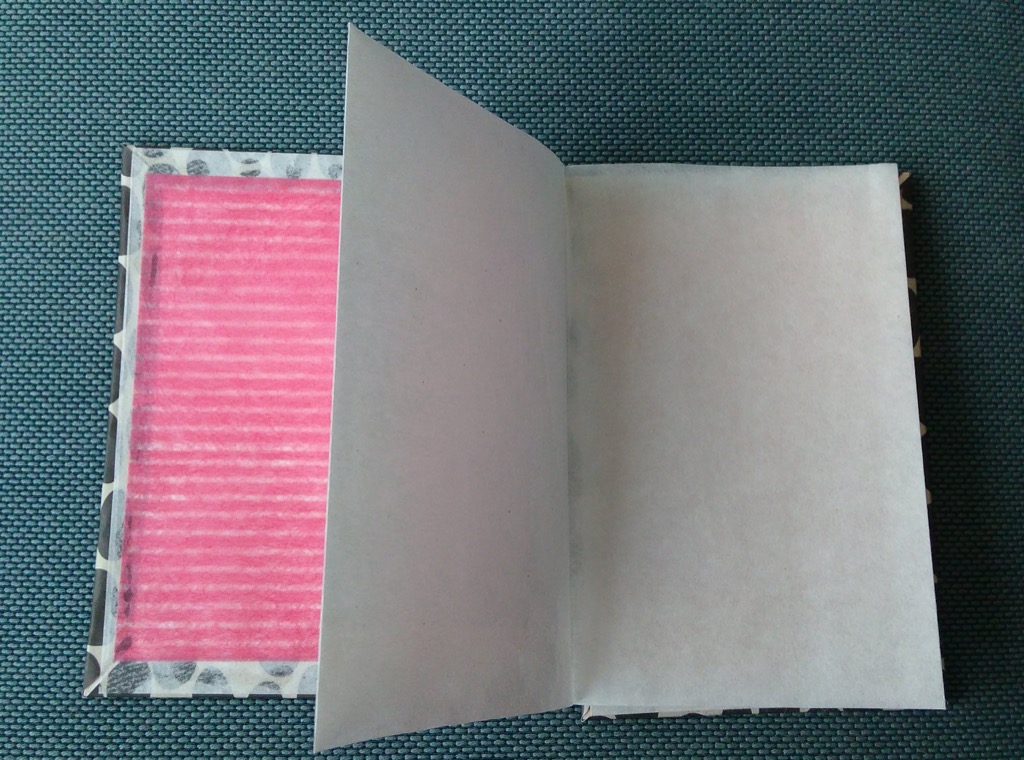
Next we turned to books bound with external stitching, which incorporates a bit of “up, across, through, across” sewing magic that I re-learned and hope, this time, to retain. I used a piece of stiff wallpaper sample as my cover, and bright red thread to sew it together, and then applied a label from a discarded package of Japanese paper to the front:
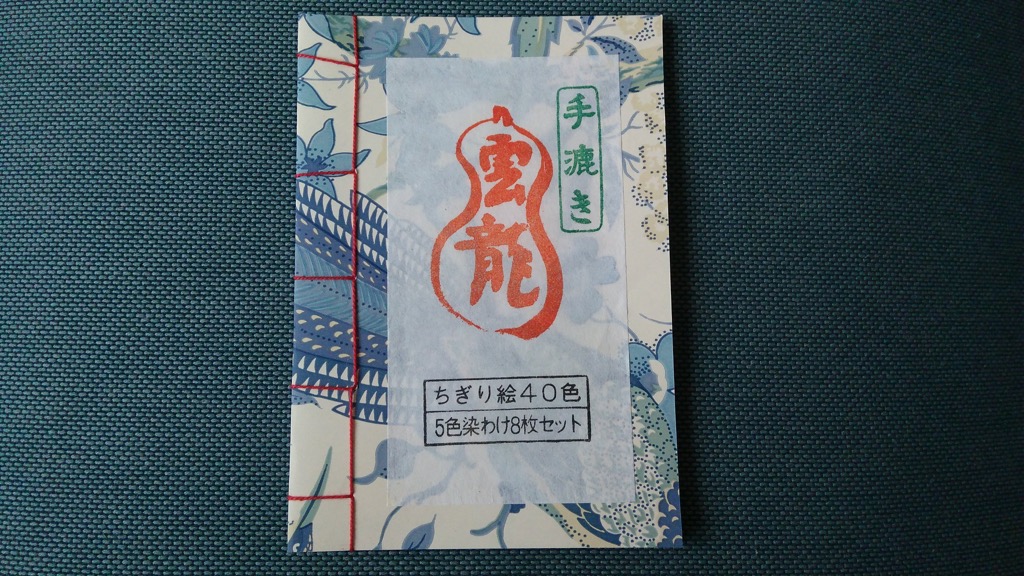
Books with the sewing on the inside finished up the day. I started by making a book covered with a sheet of handmade paper that Catherine and Oliver made together many years ago:
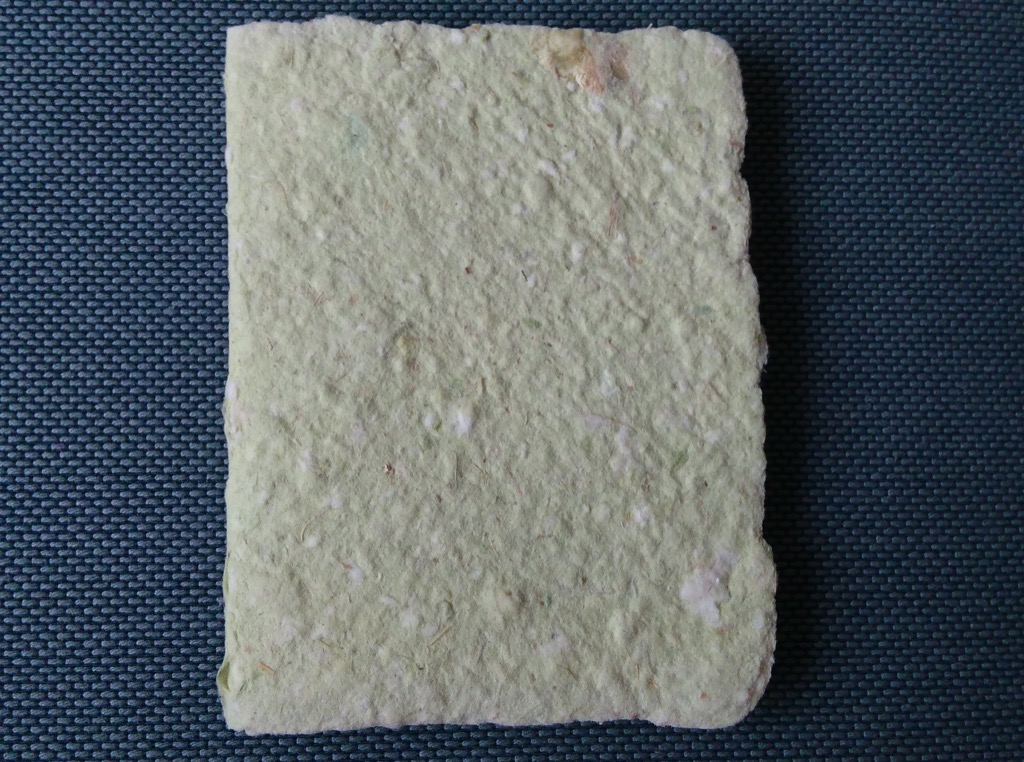
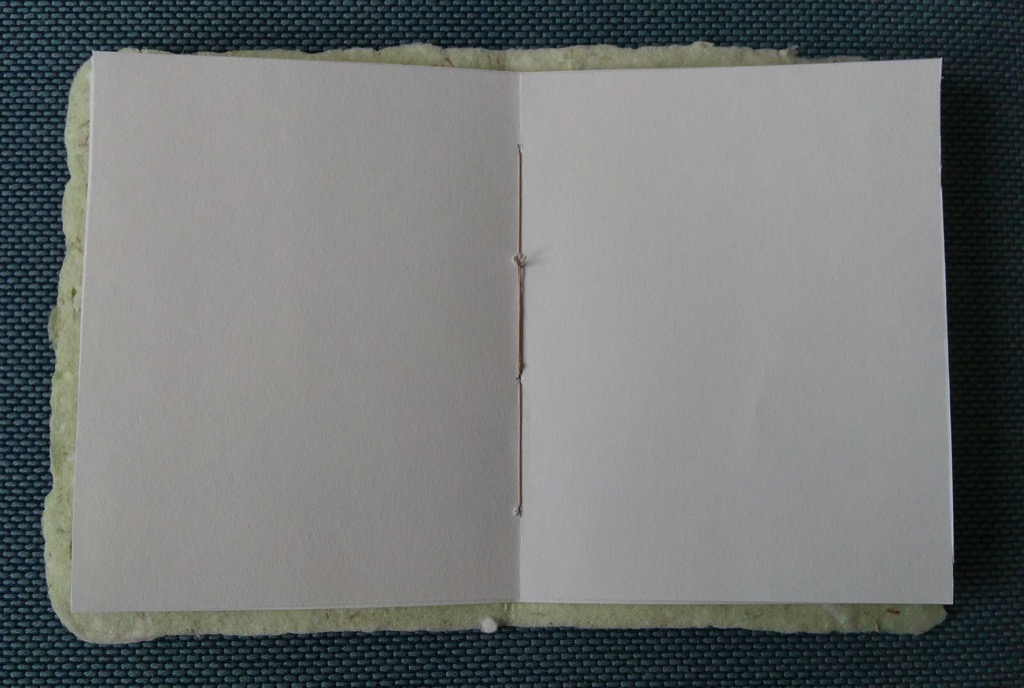
At this point Jennifer’s attention turned to giving the librarians present suggestions for easy-to-make books for children, books that, it turned out, involve exactly the kind of three dimensional thinking my brain is poor at, so I diverted to making books out of tea bags (after realizing that, contained in each tea bag and wrapping, is all one needs to make a book):
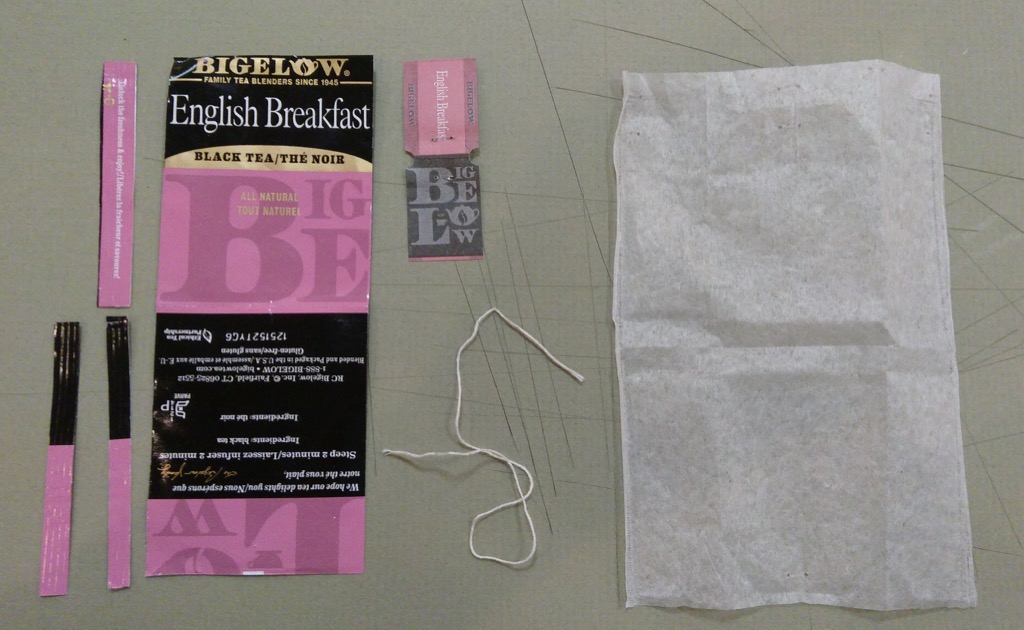
Truth be told, the amount of thread attached to the tea bag wasn’t enough to sew the book together, but otherwise everything came from the source: the tea bag, emptied of tea and carefully separated, was the paper, the wrapper was the cover, I sewed it together with some embroidery thread, and the tea bag tag, unfolded, is a handy bookmark:
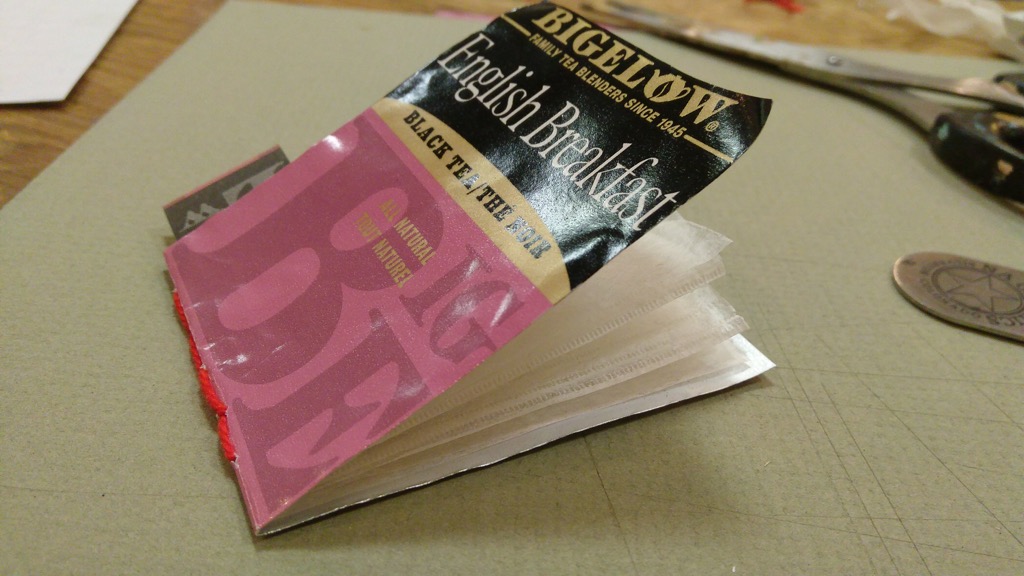
Should you ever have the chance to take one of Jennifer’s workshops, I highly recommend you do: it was a day well-spent, immersed in great fun and creativity in the company of an interesting group of people led by a skilled educator.
Just in case it’s escaped your attention, Master of None, on Netflix, is exceptional television. Recommended.
Province House is encircled by metal fencing now, and the renovations, which are really more a “disassembly and reassembly,” are well-underway. So I sat on the park bench in front of the Union Bank Building across the street and tried to capture some of what’s going on.
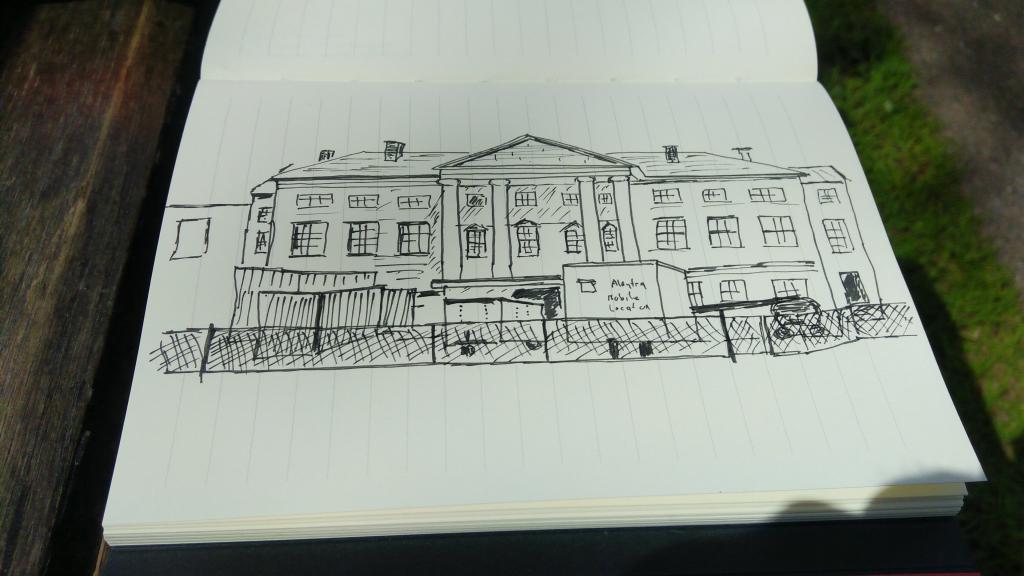
I needed to make holes in paper, but I didn’t have a hole punch here in the office.
So I found a model of a hole punch on Thingiverse and printed one for myself. It took 4 hours to print, and it looked like this when it was finished:
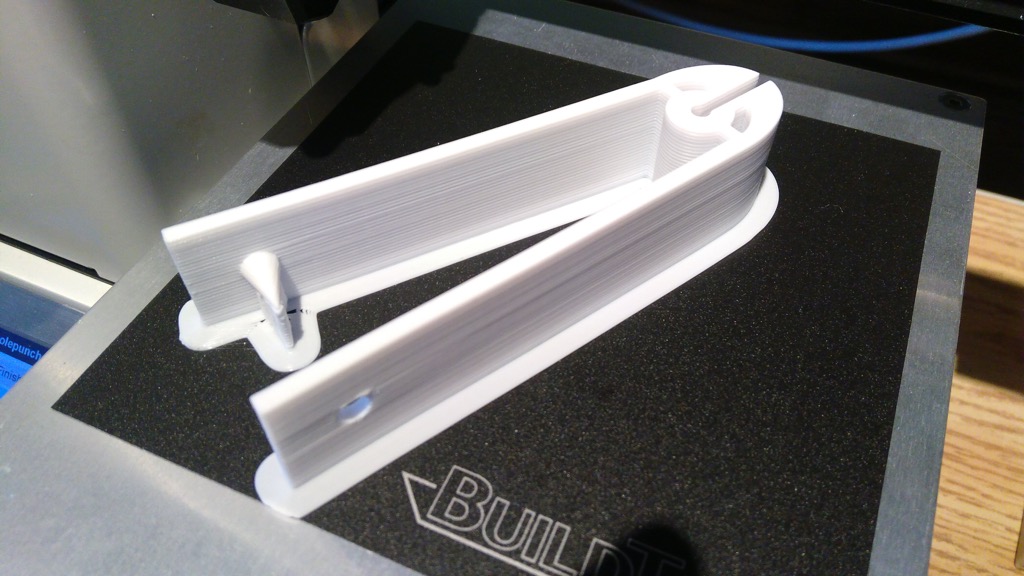
It created unsatisfyingly messy holes in paper–more like gashes than holes really:
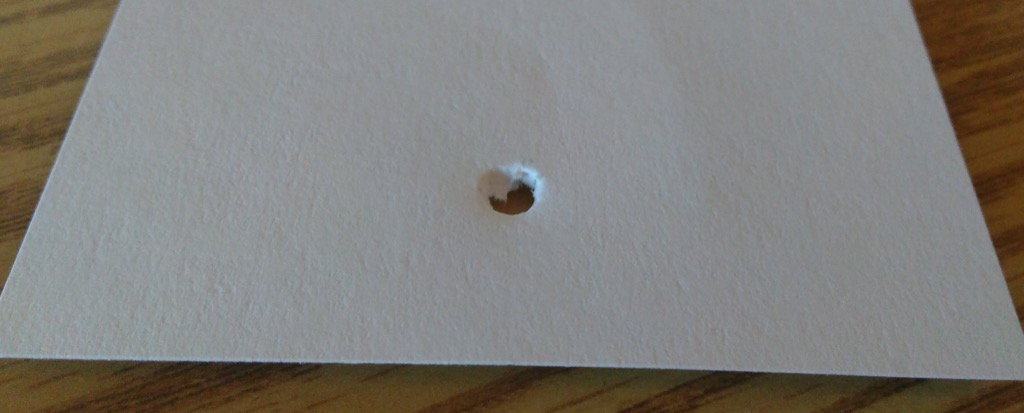
The “spring” action, however, is very satisfying, and I will see if I can take some of the ideas from the typical metal hole punch and come up with a modified version that might create more hole-like holes.
Because sometimes just staying afloat and moving forward is what you need:
“Undaunted is a terrible boat, but he is a great storm shelter. A sailing capsule ready for the worst and also able to do the easy part, sailing in a straight line.”
File this under “ways in which sailing can be a metaphor for life.” See also Sopranino.
 I am
I am